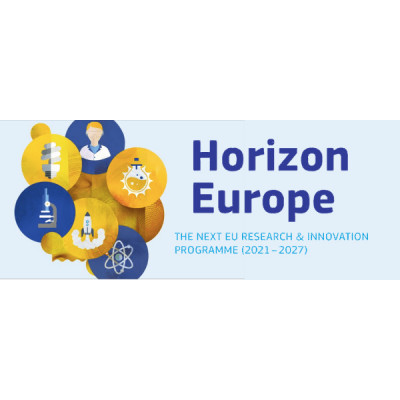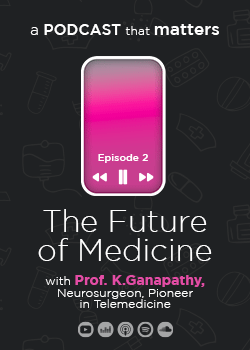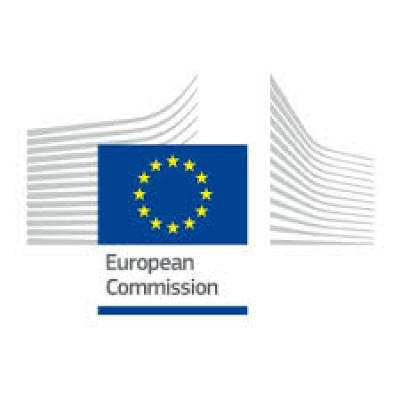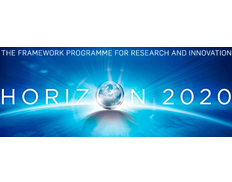
Innovative and Optimised MEA Components Towards Next Generation of Improved PEMFC Stacks for Heavy Duty Vehicles
Details
Description
Call Updates
Aug 31, 2022 3:52:39 PM
CALL UPDATE: FLASH CALL INFO
An overview of the evaluation results (flash call info) is now available under the "Topic conditions and documents" section on the topic page.
Jun 1, 2022 9:41:15 AM
CALL UPDATE: PROPOSAL NUMBERS
Call HORIZON-JTI-CLEANH2-2022-1 has closed on the 31 May 2022 17:00:00 Brussels time.
79 proposals have been submitted.
The breakdown per topic is:
HYDROGEN END USES: TRANSPORT APPLICATIONS
- HORIZON-JTI-CLEANH2-2022 -03-02: 6 proposals
Evaluation results are expected to be communicated at the end of August 2022.
Mar 31, 2022 10:16:55 AM
The submission session is now available for: HORIZON-JTI-CLEANH2-2022-03-02(HORIZON-JU-RIA)
Innovative and optimised MEA components towards next generation of improved PEMFC stacks for heavy duty vehicles
TOPIC ID: HORIZON-JTI-CLEANH2-2022-03-02
Programme: Horizon Europe Framework Programme (HORIZON)
Call: HORIZON-JTI-CLEANH2-2022 (HORIZON-JTI-CLEANH2-2022-1)
Type of action: HORIZON-JU-RIA HORIZON JU Research and Innovation Actions
Type of MGA: HORIZON Action Grant Budget-Based [HORIZON-AG]
Deadline model: single-stage
Planned opening date: 31 March 2022
Deadline date: 31 May 2022 17:00:00 Brussels time
Hydrogen as fuel in transportation has significant advantages compared to pure battery electric propulsion, especially for heavy-duty applications. But these applications require higher power and much longer lifetimes than those developed and achieved for SoA passenger cars. Further improvements of SoA components of MEAs represent a major opportunity for both increasing the areal power density and long-term durability of PEMFCs. Innovations should address the core components of MEAs – membrane, catalyst layer, microporous layer and gas diffusion media – and specifically their interactions within an MEA.
Project results are expected to contribute to all of the following expected outcomes:
- Contribute to paving the road for increased competitiveness of and market shares for European fuel cell companies in the emerging global market for PEMFC technologies in transport;
- Improvement of overall system performance of FC systems in order to improve the availability and durability and meet the needs of FCH heavy-duty vehicle (HDV) end-users;
- Improvements in design and monitoring procedures of FC systems;
- Provide MEA components that contribute to the achievement of the SRIA KPIs for HDV;
- Improve the understanding and prediction of MEA performance and lifetime;
- Support the development of specific applications for MEAs (particularly for HDV, but also transferable to rail, aviation, maritime etc) by means of materials characterisation and parameterisation of material properties;
- Provide models that support European companies developing new MEA and MEA materials and components. Enable these target groups to simulate the influence of MEA material properties on performance and degradation processes. Such physics-based MEA models are expected to become part of their workflow which is necessary to develop competitive application-specific MEAs with high durability;
- Up-take of MEA parameterisation, simulation, and support services by the target groups to strengthen the European value chain on fuel cell stacks;
- Increasing fuel efficiency during the whole FC lifetime and thereby foster the market introduction of HDV;
- Contribute to harmonisation of testing protocols for quantification of MEA performance and lifetime, including accelerated stress tests.
This topic addresses objectives for hydrogen end uses in transport applications, sub-pillars Building Blocks and HDV. In particular, project results are expected to contribute to all of the following objectives of the Clean Hydrogen JU SRIA:
- Improvement of the overall system performance for fuel cell stack technology in terms of power density, reliability and durability (KPIs for low TRL in 2024: Power density of 1.2 W/cm2@0.65 V, FC stack durability of 20,000 h);
- Reduction of PGM loading (KPI: PGM loading for low TRL < 0.30 g/kW in 2024);
- Contribute to the reduction of the FC stack cost for HDV (KPI: < 75 EUR/kW in 2024) through affordable MEA materials and components and cost of manufacturing;
- Improvements in the design and health monitoring of core components for FC stacks;
- Improvement of overall system performance of FC systems in order to improve the availability and durability and meet the needs of FCH HDV end-users;
- Improvements in design and monitoring procedures of FC systems.
Despite substantial research work continuously conducted in the field, the knowledge acquired so far shows that SoA components or methods followed for their enhancement do not reach the performance and lifetime targets for heavy-duty transport. This topic is focused on building blocks for HDV with an expectation for synergies, adaptability, and compatibility with other areas such as maritime, aviation, trains etc. Challenges to be addressed by proposals are:
- Durable and active catalysts and advanced supports are required to achieve high ORR activity and to assure long lifetime by mitigation of ECSA loss, and reduction of oxygen transport resistance. The end of life (EoL) performance of MEA in HDV applications needs to be simulated and experimentally assessed.
- The chemical and mechanical stability of the PEM can limit the lifetime in HDV applications especially at increased operating temperatures. Therefore, robust and durable membranes and ionomers are essential.
- Electrode design needs to be improved to meet the HD KPIs involving tailored ionomer loading, Pt particle size distribution and location, as well as improved catalyst ionomer interaction. The challenge is to tailor electrodes for HDV applications, where electrocatalyst-ionomer interactions and integration is improved and PGM loading is reduced.
The approach should be based on an analysis of the limitations of MEA components in terms of particularly lifetime and fuel efficiency and held against the targets for the next generation technology.
A combination of materials characterisation, optimised catalysts – support interaction, MEA fabrication, testing and modelling is considered the key to gain deeper understanding of the limitations involved in previous generation stack components. Quantification of barriers to the fluxes of mass, energy, charge, and momentum at target operating conditions of MEA for HDV is needed to progress on tailored materials and controlled structures.
Innovative materials (catalyst, catalyst support, ionomer, hydrophobic/hydrophilic treatments etc.) and components (membrane, catalyst layer, microporous layer and gas diffusion media) are expected to be fabricated and characterised at lab scale. Possible developments are, for example, membranes that are stable at high temperature (up to 120°C), high activity catalysts that are stable, improvement of the catalyst support to avoid corrosion of carbon at high voltage (start/stop) etc.
The structure of components and interfaces should be improved reflecting operational conditions representative for heavy-duty application. Analysis, optimisation, and lifetime prediction of MEA should be supported by SoA multiscale simulation. MEA models should capture the coupled transport of heat, charge, and mass, and electrochemical reactions in all MEA components and across all interfaces, including two-phase water transport, heat production/cooling. It is important to account for antagonistic transport effects to determine the impact of changes in materials, components, interfaces properties, morphology or dimension on the performance of cells and on degradation processes. Validation strategies should be based on accelerated stress tests representative for heavy-duty applications and component-specific simulation of different degradation processes.
Reproducible MEA structures and properties are prerequisites to assess MEA performance limitations and to identify transport barriers. Existing fabrication processes applied to integrate new materials/components within innovative MEA or specifically developed to realise new materials/components or structures should be demonstrated. Innovation on MEA components is also expected from the design, fabrication and analysis of alternative MEA constructions, including the reduction of PGM content, recovery of waste and recycling of components, thus facilitating the adoption of the circular economy principles. Variation of morphology, hydrophobicity, Pt content, and adaption of MEA structures to the flow-field etc. are possible approaches.
Innovation can be reached by improved model parameterisation from ex-situ characterisation of materials/components/interfaces properties, morphology. For instance, there is a significant uncertainty in the properties of commercially available components, especially of catalyst layers, microporous layers or membranes made of composite materials. The ionomer transport properties, either in the catalyst layer or in the membrane (hydration, electroosmotic drag, water diffusivity, protonic conductivity), need to be better parameterised.
Improving MEA durability in relevant testing environment without sacrificing performance is a key aspect of this topic. Therefore, MEA degradation modelling is expected to address the different sub-components of the MEA (e.g. catalyst, GDL, MPL, catalyst layer, ionomer) and their interactions. MEA simulation may also be used to predict the relation between operating temperature, cell voltage and the durability of electrodes and membranes.
Test hardware capable for reliable model parametrisation should be developed or be available for the implementation and the test of both performance and durability of reference and developed MEA. Project consortia should include the capability to manufacture MEA compatible with high volume manufacturing to ensure future exploitation potential to be reached. Final validation of MEAs should be performed by using single cells and possibly in short stacks in-line with EU standardisation activities. MEA durability assessment should be performed on the cell level for a minimum of 1,000 hours of operation with extrapolation possibly up to 20,000 hours. Access to OEM single cell/stack testing hardware for final validation is requested.
Target groups are companies fabricating MEA components, MEAs, and the scientific community working on new materials and components.
A TRL 4 should be targeted as final TRL considering the current state of the art MEA used in LDV applications and related knowledge and experience from the previous FCH JU projects [1](e.g. GAIA, Immortal). Development of PGM free catalysts, new fabrication and scale up processes are out of scope. Work will be conducted on SoA fabrication methods of Pt or Pt alloys/C based catalyst layers and should consider the recovery and recycling of by-products and waste. A company being able to manufacture MEAs should be part of the consortium for better exploitation value. Participation of an OEM or a stack manufacturer is encouraged. At least, an OEM should be part of the project’s advisory board. Projects should build synergies with current projects[1] on MEA/components development for light-duty applications (e.g. FURTHER-FC, DOLPHIN, GAIA). Agreement of companies to extract material parameterisations by ex-situ characterisation should be sought to gain predictive numerical simulation results.
Proposals are expected to address sustainability and circularity aspects.
Activities developing test protocols and procedures for the performance and durability assessment of electrolysers and fuel cell components proposals should foresee a collaboration mechanism with JRC (see section 2.2.4.3 "Collaboration with JRC"), in order to support EU-wide harmonisation. Test activities should adopt the already published EU harmonised testing protocols[3] to benchmark performance and quantify progress at programme level.
Activities are expected to start at TRL 2 and achieve TRL 4 by the end of the project.
The conditions related to this topic are provided in the chapter 2.2.3.2 of the Clean Hydrogen JU 2022 Annual Work Plan and in the General Annexes to the Horizon Europe Work Programme 2021–2022 which apply mutatis mutandis.
[1]https://www.clean-hydrogen.europa.eu/projects-repository_en
[2]https://www.clean-hydrogen.europa.eu/projects-repository_en
[3]https://www.clean-hydrogen.europa.eu/knowledge-management/collaboration-jrc-0_en



